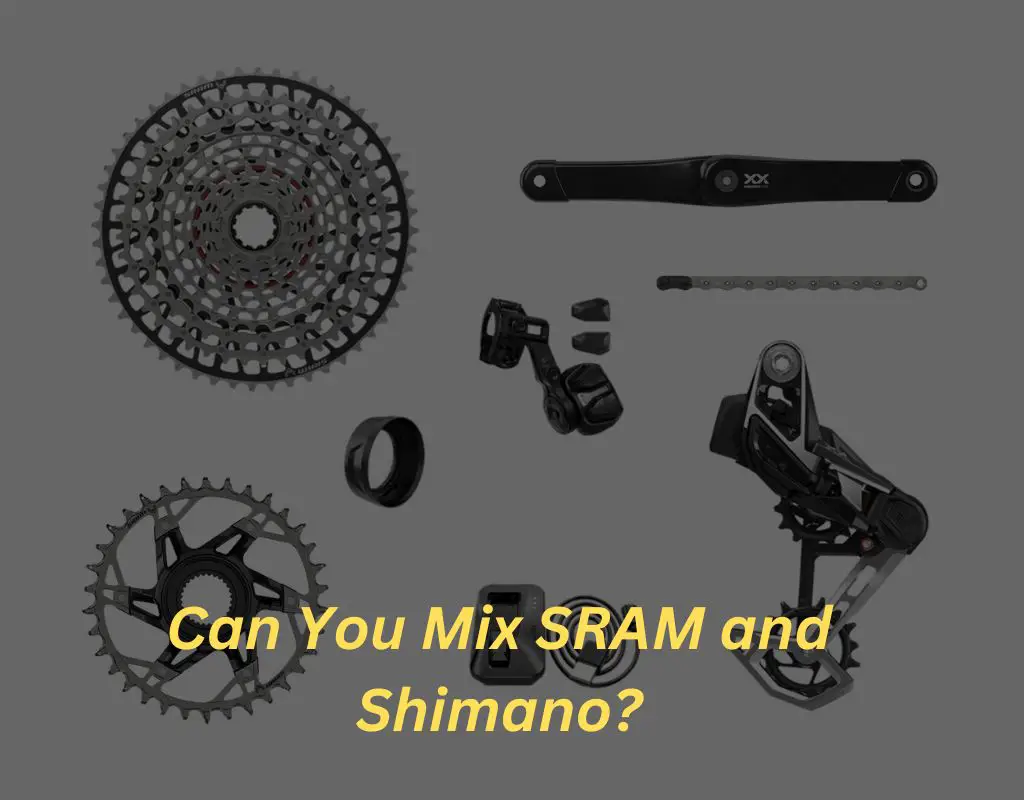
If you are a bike enthusiast, you may have wondered if you can mix SRAM and Shimano components on your bike. The answer is not straightforward, as it depends on which parts you want to mix and match.
We will explore the compatibility of SRAM and Shimano drivetrains, brakes, and cranksets, and give you some tips and tricks on how to make them work together.
Drivetrains
The drivetrain is the system that transfers power from your pedals to your rear wheel. It consists of the chain, cassette, rear derailleur, shifters, and sometimes a front derailleur and chainrings.
The drivetrain components need to work in harmony to provide smooth and precise shifting.
Speed
The main factor that determines the compatibility of drivetrain components is the speed or number of gears. For example, if you have a 10-speed cassette, you need a 10-speed chain, rear derailleur, and shifter to match it. You cannot use an 11-speed shifter with a 10-speed cassette, as the cable pull and shift activation ratios are different.
However, within the same speed range, you can sometimes mix SRAM and Shimano components. For instance, SRAM 10-speed cranksets can be used with 10-speed Shimano groupsets and vice versa . You can also use a JTek Shiftmate 4 adapter to make a SRAM rear derailleur work with a Shimano shifter .
But, you may need to adjust the cable tension and limit screws to fine-tune the shifting performance.
Related: Can you Mix Shimano Groupsets?
Brakes
The brakes are the system that slows down or stops your bike. They consist of the brake levers, calipers, rotors, pads, and hoses or cables. The brakes need to provide reliable and consistent braking power in all conditions.
Brake System
The main factor that determines the compatibility of brake components is the type of brake system: mechanical or hydraulic. Mechanical brakes use cables to connect the levers and calipers, while hydraulic brakes use fluid-filled hoses. Mechanical brakes are generally easier to install and maintain, but hydraulic brakes offer better modulation and control.
You can mix SRAM and Shimano mechanical brake components without any issues, as long as they have the same mounting standard (IS or Post Mount) and rotor size.
However, you cannot mix SRAM and Shimano hydraulic brake components at all. Because Shimano brakes use mineral oil as hydraulic fluid, while SRAM uses DOT brake fluid. These fluids are incompatible and will damage the seals in the levers and calipers .
Therefore, if you want to switch from SRAM to Shimano hydraulic brakes or vice versa, you need to replace the entire brake system.
Related: Is Shimano R7000 Compatible with 6800?
Crankset
The crankset is the part that connects your pedals to your chainrings. It consists of the crank arms, spindle, bottom bracket, and chainrings. The crankset needs to be compatible with your frame size, bottom bracket standard, chainline, and drivetrain speed.
Chainring Size and Shape
The factor that determines the compatibility of crankset components is the chainring size and shape. Different brands use different technologies to optimize the chainring design for better shifting performance and chain retention.
SRAM uses X-Sync technology, which features tall and fat teeth that alternate in width to match the inner and outer links of the chain. Shimano uses Hyperglide+ technology, which features specially shaped teeth that guide the chain smoothly from one gear to another.
You can use a SRAM crankset with a Shimano drivetrain or vice versa, as long as they have the same number of gears and chainring size. You may experience some loss of performance or reliability due to the different chainring designs.
For instance, if you use a SRAM X-Sync chainring with a Shimano rear derailleur without a clutch feature or a chain guide, you may have more risk of dropping your chain. Therefore, it is advisable to use matching cranksets and drivetrains from the same brand for optimal results.
Read Also: Can You Wear Pit Vipers Over Glasses?
Conclusion
You can mix SRAM and Shimano components on your bike in some cases, but not in others. The compatibility depends on which parts you want to mix and match, and what speed or type of system they belong to.
Generally, it is easier to mix drivetrain components than brake components within the same speed range. But, you may need some adapters or adjustments to make them work together smoothly.
